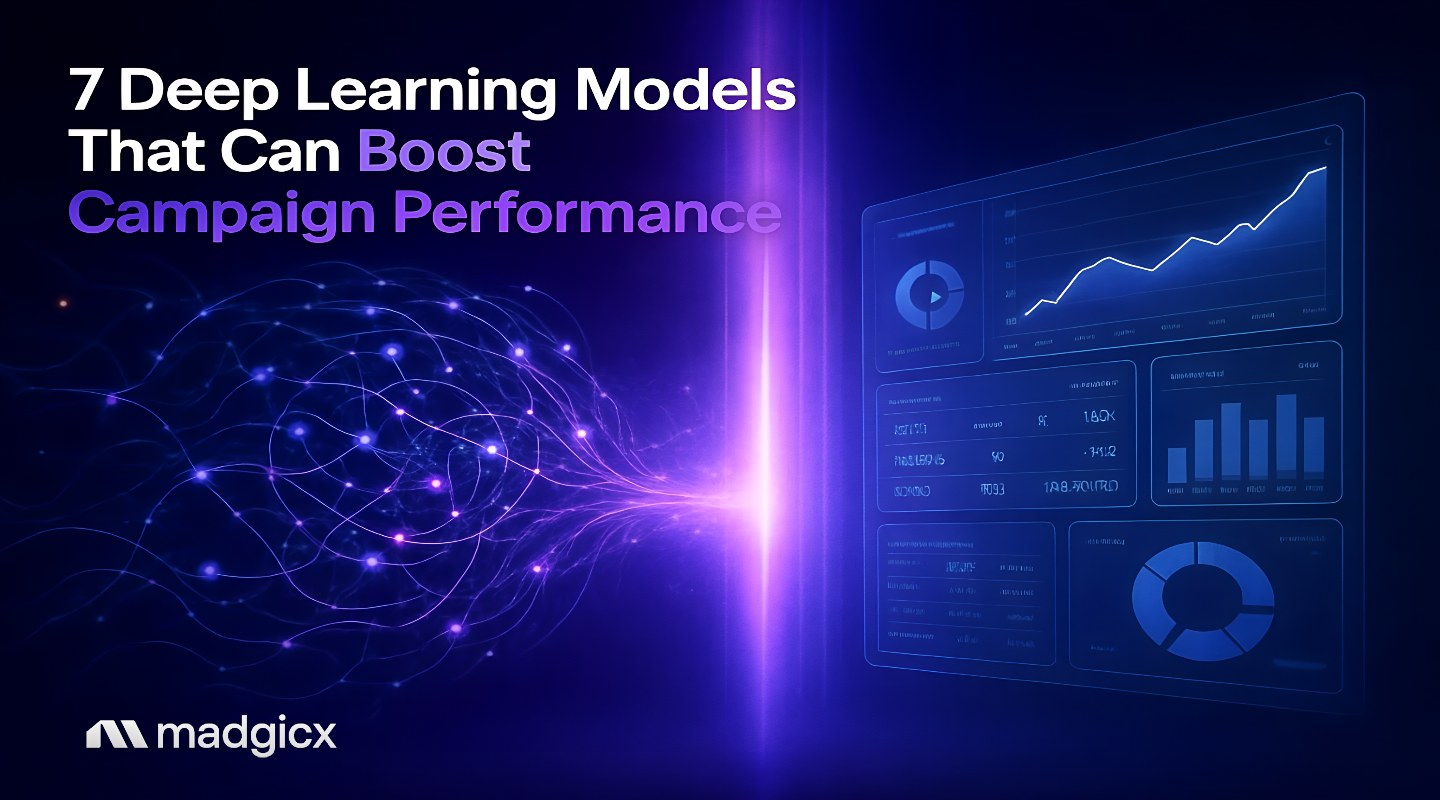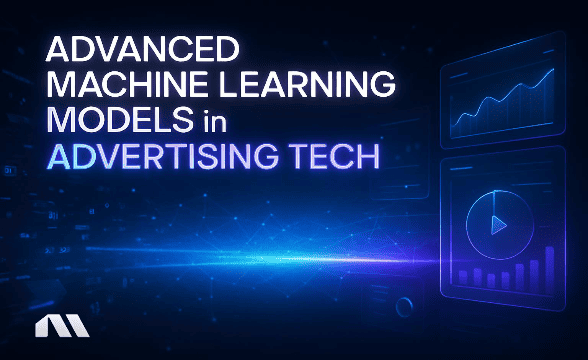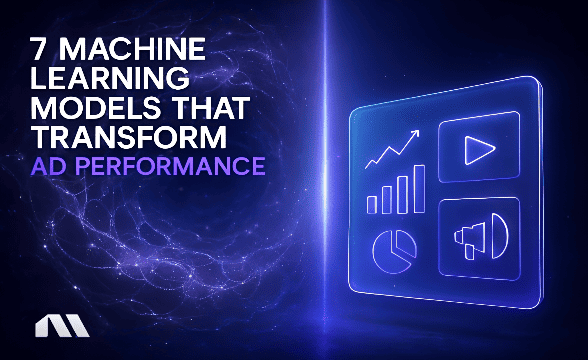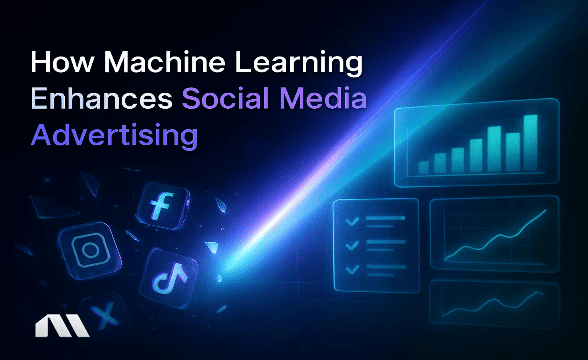Discover 7 deep learning models that boost campaign performance. Complete implementation guide with case studies and step-by-step optimization strategies.
Picture this: Marcus, a performance marketing director at a Fortune 500 retailer, was drowning in spreadsheets at 2 AM, manually adjusting bids across 47 campaigns. Sound familiar?
Three months later, after implementing deep learning optimization, his team saw 34% ROAS improvements in their first month. The difference? He stopped fighting the data and started letting AI assist with the heavy lifting.
Here's the thing – while you're burning midnight oil tweaking campaigns, other businesses are using AI to assist with optimization tasks. The performance differences are becoming more significant.
Deep learning models for campaign optimization can help by automating creative testing, predicting audience behavior, and adjusting budgets in real-time. Companies using deep learning often see 35% improvements in ROAS and 40% increases in conversion rates compared to manual optimization methods.
But here's what most guides won't tell you: implementing deep learning models for campaign optimization isn't about choosing between fancy algorithms. It's about understanding which specific models solve your biggest performance bottlenecks and knowing exactly how to deploy them without breaking your budget or sanity.
In this guide, we'll walk through 7 proven deep learning models that leading brands use to improve their campaign performance. You'll get the implementation roadmap, real case studies, and honest timelines that other "AI guides" conveniently skip.
What You'll Learn About Deep Learning Models for Campaign Optimization
By the end of this guide, you'll have a complete implementation roadmap for:
- 7 specific deep learning models that can significantly increase ROAS
- Step-by-step implementation process for each model type
- Platform-specific guidance for Meta Ads optimization
- Real case studies with performance improvements and timelines
- Common implementation challenges and how to avoid them
- Budget requirements and realistic timeline expectations
- Bonus: Deep learning vs machine learning comparison for advertising
Let's dive into the models that are reshaping performance marketing.
1. Dynamic Creative Optimization Using Convolutional Neural Networks
Remember when A/B testing meant waiting weeks to test two ad variations? Those days are officially over.
The Impact: Convolutional Neural Networks (CNNs) can analyze multiple creative combinations simultaneously, identifying winning patterns that human eyes might miss. While traditional A/B testing limits you to comparing 2-3 variations, CNNs process visual elements, copy performance patterns, and audience responses to help predict better-performing combinations.
How It Works: CNNs break down your creatives into component parts – colors, text placement, imagery, call-to-action buttons – then analyze how each element performs across different audience segments. The model learns which visual patterns tend to drive conversions and can help generate new combinations that follow these successful patterns.
Real Example: Gumtree UK implemented CNN-powered creative optimization and saw 33% more traffic with 2x the conversions. Their insight? The AI identified that yellow backgrounds with minimal text performed 73% better for their automotive listings, something their design team never would have tested.
Platform Implementation:
- Meta Ads: Use Dynamic Creative combined with Advantage+ campaigns for CNN-like optimization
- Advanced Setup: Madgicx's AI Ad Generator creates variations that feed into these optimization systems
Brands using machine learning for Facebook ads often see substantial improvements in click-through rates compared to manually designed ads.
Pro Tip: You need at least 50 conversions per week for CNNs to learn effectively. Start with your highest-volume campaigns first.
2. Predictive Audience Segmentation with Recurrent Neural Networks
Demographics are becoming less effective. Behavioral prediction is the new focus.
The Impact: Recurrent Neural Networks (RNNs) analyze user journey patterns and sequential behavior to predict who's most likely to convert, not just based on what they are, but what they do. This goes far beyond traditional interest targeting or lookalike audiences.
How It Works: RNNs process sequences of user actions – page visits, time spent, scroll depth, previous purchases – to identify behavioral patterns that indicate purchase intent. The model learns that users who visit product pages, then pricing pages, then return within 3 days have significantly higher conversion probability.
Real Example: An automotive brand implemented RNN-based audience segmentation and achieved a 40% increase in test drive bookings. The AI discovered that users who viewed safety ratings after looking at family cars were 3x more likely to schedule test drives – a pattern no human analyst had identified.
Platform Implementation:
- Meta Ads: Enhanced lookalike audiences combined with Advantage+ audience expansion
- Advanced Setup: Madgicx's Audience Insights automatically identifies these behavioral segments
Predictive audience segments often show significantly higher conversion rates compared to traditional demographic targeting, with 78% of marketers now using neural networks for customer segmentation.
Pro Tip: Combine your first-party data (email lists, website behavior) with platform signals for more accurate behavioral predictions. The magic happens when you can connect our machine learning models for campaign optimization with your customer data.
3. Real-Time Budget Optimization Using Deep Q-Learning
What if your campaigns could automatically shift budget to winning ad sets faster than you could manually adjust them?
The Impact: Deep Q-Learning, a reinforcement learning technique, makes continuous budget allocation decisions based on real-time campaign performance data. Instead of checking campaigns daily and manually adjusting budgets, the AI makes these decisions much more frequently.
How It Works: The Q-Learning algorithm treats budget allocation like a game where the goal is maximizing conversions. It learns from every budget decision – if moving $100 from Campaign A to Campaign B increases conversions, it remembers this pattern and applies it to similar situations in the future.
Real Example: P&G achieved a 42% efficiency improvement by implementing deep Q-Learning for budget optimization across their portfolio. The AI identified that their skincare campaigns performed 67% better on weekday mornings, automatically shifting budget accordingly.
Platform Implementation:
- Meta Ads: Campaign Budget Optimization (CBO) with Advantage+ campaigns
- Advanced Setup: Madgicx's budget management provides enhanced Meta ad optimization recommendations
Brands using automated budget allocation often see 25-40% performance improvements over manual allocation methods.
Try Madgicx’s AI for a week here.
Pro Tip: Start by automating 20% of your budget. Once you see consistent performance improvements over 2-3 weeks, gradually increase the automated portion. Our guide on how to automate ad campaigns with AI covers the complete scaling strategy.
4. Attribution Modeling with Transformer Networks
The customer journey isn't linear, so why should your attribution model be?
The Impact: Transformer networks use attention mechanisms to understand complex, multi-touch customer journeys. Instead of giving all credit to the last click, these models identify which touchpoints actually influence conversions throughout the entire journey.
How It Works: Transformers analyze sequences of customer interactions – display ad views, social media clicks, email opens, search queries – and determine the relative importance of each touchpoint. The "attention mechanism" focuses on the interactions that most strongly predict conversions.
Real Example: A retail brand discovered through transformer-based attribution that their display ads, previously considered "ineffective," were actually contributing to 34% of their conversions when properly attributed. This insight led to 24.6% improvement in cost efficiency by reallocating budget to undervalued channels.
Platform Implementation:
- Meta Ads: Meta Attribution combined with Conversions API for better tracking
- Advanced Setup: Madgicx's Cloud Tracking provides server-side attribution that addresses iOS tracking challenges
Brands using advanced attribution modeling often see better cost efficiency compared to last-click attribution, especially when they can predict ad performance across multiple touchpoints.
Pro Tip: Implement server-side tracking first to ensure data accuracy, especially for iOS 14.5+ users. Without clean data, even the best attribution models will mislead you.
5. Personalized Ad Copy Generation Using Large Language Models
Scale personalization beyond "Hi [First Name]" – your audience deserves better.
The Impact: Large Language Models (LLMs) generate contextually relevant ad copy that speaks directly to specific audience segments, interests, and behavioral patterns. Instead of one-size-fits-all messaging, each user sees copy tailored to their specific needs and stage in the customer journey.
How It Works: LLMs analyze your existing high-performing copy, customer data, and audience insights to generate variations that maintain your brand voice while addressing specific pain points. The model learns that fitness enthusiasts respond to "transform your body" while busy professionals prefer "efficient workouts."
Real Example: An e-commerce brand implemented LLM-powered personalization and achieved significantly higher ROI through personalized campaigns. The AI discovered that showing "limited time" messaging to previous visitors while showing "free shipping" to new visitors improved conversion rates substantially.
Platform Implementation:
- Meta Ads: Dynamic Language Optimization within Dynamic Creative
- Advanced Setup: AI copywriting integrates audience data for enhanced personalization
Personalized campaigns often see higher ROI compared to generic messaging, with higher click-through rates when using AI-generated ad creatives.
Pro Tip: Test 5-10 copy variations per audience segment. The AI needs enough data to identify which messaging resonates with each group. Start with your highest-converting audiences first.
6. Bid Optimization Using Neural Network Ensembles
What if every bid decision was made by a committee of AI experts?
The Impact: Neural network ensembles combine multiple AI models to make bid decisions, similar to having several expert media buyers vote on the optimal bid for each auction. This approach reduces the risk of any single model making poor decisions while maximizing the probability of winning valuable conversions.
How It Works: Multiple neural networks analyze different aspects of each auction – user behavior, time of day, device type, competition level – then vote on the optimal bid amount. The ensemble approach means that even if one model is having an off day, the others compensate.
Real Example: RTB House achieved a 41% improvement in click-through rates using ensemble bidding methods. Their system identified that mobile users on weekends required 23% lower bids to achieve the same conversion rate, automatically adjusting accordingly.
Platform Implementation:
- Meta Ads: Automatic bidding with Advantage+ campaigns leverages ensemble-like optimization
- Advanced Setup: Madgicx's AI-powered bid management combines multiple optimization signals
Ensemble bidding often delivers significantly better click-through rates compared to manual bidding strategies.
Pro Tip: Allow a 2-week learning period for bid optimization models. The AI needs time to understand your conversion patterns and competitive landscape. Resist the urge to make manual adjustments during this period.
7. Cross-Platform Performance Prediction Using Deep Ensemble Methods
Stop optimizing platforms in silos – your customers don't live in one place.
The Impact: Deep ensemble methods can help predict performance patterns across different platforms, enabling more informed optimization strategies. Instead of managing each platform completely separately, you can gain insights that help improve overall performance.
How It Works: Ensemble models analyze user behavior patterns, identifying how actions on one platform might influence conversions on another. The system can learn that users who engage with your Instagram ads may be more likely to convert through other channels within a certain timeframe.
Real Example: A multi-platform retailer achieved improved ROAS by implementing cross-platform ensemble insights. The AI discovered that their Meta campaigns drove awareness while other campaigns captured conversions, leading to optimized budget allocation strategies.
Platform Implementation:
- Challenge: Most platforms optimize in isolation
- Solution: Third-party tools like Madgicx provide unified insights across Meta and other advertising platforms
- Advanced Setup: Cross-platform attribution and budget optimization based on unified performance data
Brands using cross-platform optimization insights often see substantial ROAS improvements compared to platform-specific optimization alone.
Pro Tip: Standardize conversion tracking across all platforms first. Without consistent data, cross-platform optimization becomes impossible. Our AI advertising platform guide covers the technical setup requirements.
Common Implementation Challenges and Solutions
Let's address the elephant in the room – implementing deep learning models for campaign optimization isn't always smooth sailing.
Data Quality Requirements: Deep learning models are only as good as the data they receive. Poor data quality leads to poor decisions, often worse than manual optimization.
Solution: Audit your tracking setup before implementing any AI optimization. Ensure consistent conversion tracking, clean your customer data, and implement server-side tracking for accuracy.
Budget Control Concerns: Many marketers worry about AI spending budgets too quickly or making expensive mistakes.
Solution: Start with 20% of your budget automated and gradually increase based on performance. Set daily spending limits and implement automated rules for extreme scenarios.
Technical Complexity: Most marketing teams lack data science expertise to implement advanced deep learning models.
Solution: Use platforms like Madgicx that handle the technical complexity while providing transparent insights into AI decision-making. You get the benefits without needing a PhD in machine learning.
Integration Challenges: Connecting AI optimization with existing tools and workflows can be complex.
Solution: Choose platforms with robust API integrations and pre-built connections to major advertising platforms. Ensure your chosen solution works with your existing tech stack.
Timeline Expectations: Unrealistic expectations about how quickly AI optimization delivers results.
Solution: Plan for 30-90 day optimization periods. AI needs time to learn your specific business patterns and customer behavior. Initial improvements are possible, but sustainable improvements take time.
Understanding these challenges upfront prevents frustration and sets realistic expectations for your deep learning implementation.
Frequently Asked Questions About Deep Learning Models for Campaign Optimization
How do deep learning models for campaign optimization compare to traditional machine learning?
Deep learning uses neural networks with multiple layers to identify complex patterns that traditional machine learning might miss. While machine learning might optimize based on 10-20 variables, deep learning can analyze multiple variables simultaneously, finding subtle correlations that can improve performance. For advertising, this means better creative optimization, more accurate audience prediction, and smarter budget allocation.
What budget is needed to effectively use deep learning models for campaign optimization?
Most deep learning optimization works best with minimum monthly ad spend of $5,000-$10,000 to generate enough data for effective learning. For advanced implementations, $25,000-$50,000+ monthly spend provides optimal results. However, platforms like Madgicx make deep learning accessible to smaller budgets by pooling data insights across multiple advertisers.
How long does it take to see results from deep learning models for campaign optimization?
Initial improvements often appear within 7-14 days, but significant optimization typically requires 30-90 days. The AI needs time to learn your specific audience behavior, seasonal patterns, and competitive landscape. Patience during the learning period is crucial – premature manual interventions can reset the learning process.
Can deep learning models work with small data sets?
Deep learning generally requires substantial data to perform effectively. However, transfer learning techniques allow models trained on large datasets to work with smaller accounts. Platforms like Madgicx use this approach, applying learnings from thousands of advertisers to optimize smaller accounts that wouldn't have enough data independently.
What's the difference between deep learning models on Meta vs other platforms?
Meta's deep learning focuses heavily on creative optimization and social behavior prediction, while other platforms emphasize different signals like search intent. Meta excels at visual pattern recognition and social signals. The most effective approach often combines insights from multiple platforms through unified optimization strategies.
Your Deep Learning Implementation Roadmap
We've covered 7 deep learning models for campaign optimization that can deliver substantial ROAS improvements, but where do you start?
Recap the Impact: Dynamic creative optimization, predictive audience segmentation, real-time budget optimization, advanced attribution modeling, personalized copy generation, ensemble bidding, and cross-platform prediction – each model addresses specific performance bottlenecks that manual optimization struggles to solve at scale.
Start Here: Begin with Dynamic Creative Optimization using CNNs. It's the most accessible entry point with visible results. Once you see improvements from AI-generated creatives, you'll have the confidence and budget to expand to other models.
Your 30-Day Pilot Program:
- Week 1: Implement CNN-based creative optimization on your top-performing campaigns
- Week 2: Add RNN audience segmentation to expand reach
- Week 3: Enable automated budget optimization with Q-Learning
- Week 4: Analyze results and plan next model implementation
The Madgicx Advantage: Instead of building these models from scratch, Madgicx's AI Marketer implements advanced optimization approaches automatically. The platform continuously monitors performance, provides optimization recommendations, and helps improve attribution – delivering advanced optimization capabilities to businesses of various sizes.
Looking Forward: Deep learning models for campaign optimization are evolving rapidly. The brands that embrace these technologies now will have significant advantages over competitors still stuck in manual optimization mode. The question isn't whether AI will transform advertising – it's whether you'll lead the transformation or get left behind.
The choice is yours: continue burning midnight oil on manual optimizations, or let deep learning assist with optimization while you focus on strategy and growth.
Stop manually optimizing campaigns and let AI assist with the heavy lifting. Madgicx's AI Marketer uses advanced deep learning models to automatically provide Meta ad optimization recommendations for your Meta campaigns 24/7, helping you achieve better results.
Digital copywriter with a passion for sculpting words that resonate in a digital age.







.avif)







